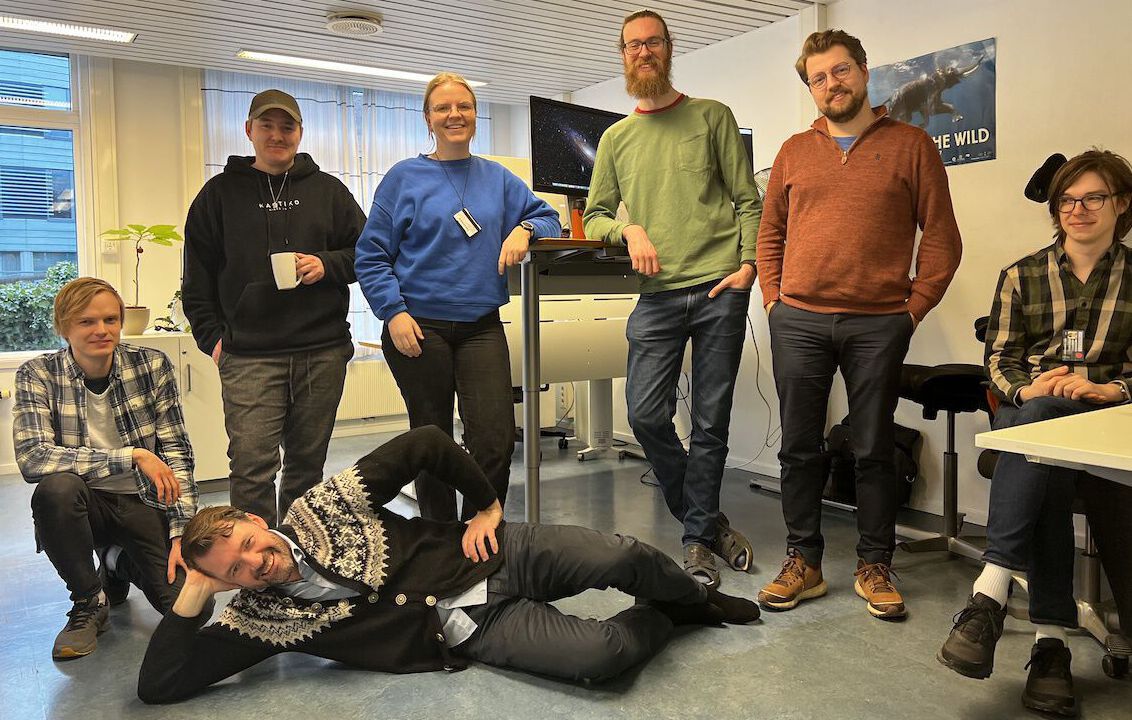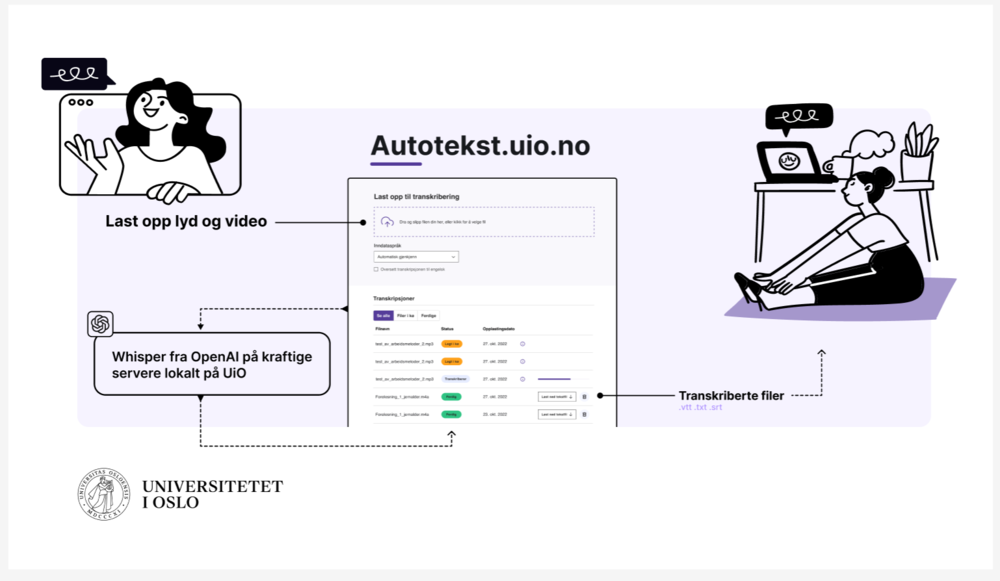The hunt for good automatic subtitling
UiO's captioning tool Autotekst has arrived in a new version, with better captioning that requires less post-work. – Two years ago we developed the Autotext service to make it easier to caption video. It is a requirement that all lecture videos on uio.no must be subtitled, and since the requirement came into force, we have worked hard to come up with a technical solution for good automatic subtitles, says head of web development at UiO, Dagfinn Bergsager. – Subtitling is very time-consuming, so it has been important to find a solution that requires as little manual subtitling as possible. And now we have it! It works very well for Norwegian, even when the speaker has a dialect. It can also do automatic translations to English.
Autotekst is now available in a new improved version
AutoText, when it launched, received audio data, sent it to Google's Speech2text service, and returned text. The problem was that the quality of transcription of Norwegian speech was very low, and required a lot of post-work. – We have calculated the cost of rewriting the text for all lecture videos that are published on uio.no at NOK 20 million a year! In addition, we had privacy challenges with sending data out of Norway every time we had to transcribe, Bergsager continues.
But now Autotekst has been launched in a new version, with new and much better technology that drives the speech-to-text engine. The new service that has been launched requires significantly less post-work and in many cases subtitles can be published without being rewritten afterwards. This way anyone who has to subtitle video or transcribe audio can save a lot of time and resources.
OpenAI saved us
At the end of autumn 2022, just before ChatGPT became the talk of the year, OpenAi launched the Whisper service. This is software that is based on AI models that can run on local servers. The challenge is that the service requires a lot of computing power. Fortunately, the IT department at UiO has exactly that - i.e. a lot of computing power - so now the tool Whisper runs on our own infrastructure without any data leaving the campus and UiO's servers.
Handpicked special team

Before new year, an interdisciplinary team of developers and interaction designers was assembled to change the autotekst.uio.no service, which we already had, to use Whisper for transcription. In addition, they were to make the entire service more user-friendly and to adopt several new functions, including automatic translation into English.
During week 1 in 2023, the entire project was completed in record time and the service was rewritten. The IT department launched a fully tested full version on 1 February 2023!
– We have already received a lot of feedback about how incredibly well autotekst.uio.no is now able to convert Norwegian speech data, even with different dialects, into text.

Next step: Integration with the Nettskjema Dictaphone mobile app
It is already possible to transcribe audio recordings taken with the nettskjama-dictaphone mobile app, but then you must first download the recording and upload it to autotekst.uio.no. During the spring of 2023, all audio recordings saved in Nettskjema with the dictaphone app will be automatically transcribed using the same servers.
Use of the autotekst.uio.no service is freely available to all UiO users and can be ordered by all FEIDE institutions.
Read more about the service and watch the instructional video.